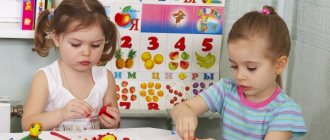Filtering information, or the important role of television
We will not talk now about the dangers of the TV itself (computer, tablet). Doctors talk a lot about this, but we will remind you of the colossal influence that what a small viewer watches has on moral education. Any seemingly most harmless cartoon carries a semantic load . The beloved hero becomes a role model; his behavior makes adjustments to the upbringing of the preschooler. Therefore, pay attention to what your baby is watching?
In the last century, during that same Soviet era, the state solved this problem for parents with the help of Soyuzmultfilm. Everything that appeared on the screens had an educational purpose. Cartoons taught people to be kind, well-mannered, educated, and hardworking. They taught to love their homeland, love their parents, make friends and respect their elders. And even the “evil” in Soviet cartoons, for the most part, was kindly charming and funny. Do we need to remind you what the level of morality was in the country?
Today the filter and censorship were completely turned off . All kinds of monsters, ugly characters, constantly swearing, shoving, rude, ill-mannered and unkempt, look at the baby from the TV screen.
Important
Notice what information is conveyed by low-quality cartoons from cheap commercial channels?
What children see and what they take in:
- Aggression. An eye for an eye, a tooth for a tooth, and that's putting it mildly. Hit, push, throw something at someone who annoys you;
- Selfishness. Every man for himself in this world;
- Lack of compassion. Laugh if someone is hurt, pass by if someone needs help. Plus the endless pain that the heroes experience. They are beaten, a weight falls on them, they fall from a height, and there are no feelings of regret - children are asked to laugh at an animal that has fallen from a height (example);
- Cunning. To deceive, to deceive in order to achieve a goal;
- Bad manners (how I want to talk about Peppa Pig). Cartoon characters are not shy about the sounds of their bodies (and laugh fervently at this), they climb into the mud and enter without knocking.
Mathematical quests for preparatory groups, KVN and puzzles
And these characters can become examples of moral culture, just think about it. Cheap videos filled the Internet. Children independently click cartoons on their tablets and computers, while their mothers rush to do household chores. This “information dump” poses a serious danger and damages not only the morality of children, but also their fragile psyche as a whole. Choose only those cartoons that teach goodness and justice - the basis of moral education.
Personal example - its role in moral education
As we wrote above, children cannot be taught morality; they can only learn it from adults. Adults are an example for preschool age. Especially the example of parents. Parents are ideal for the baby . Everything they do is right and good for him by default. If a mother raises her hand to a child, and a father resolves conflicts with his fists (or worse, hits the mother), then they can tell him as much as they want that fighting is not good, but he has already taken the model of behavior from his parents, and for him it is the only correct one .
Kindergarten program for developing attention
For children, sources of moral education are:
- Parents;
- The adults around him (caregivers, teachers, relatives, older brothers and sisters);
- Fairy tales (especially folk tales, and not only Russian ones);
- TV and Internet;
- Environment.
Attention
Recognizing someone as an authority, the child consciously (and more often subconsciously) copies his behavior, and this, for a second, forms the foundation of his moral image. Therefore, dear parents, educators, and simply elders, be careful about your behavior if you want our future generation to be morally and spiritually educated.
Moral education of preschool children in kindergarten
Moral education in kindergarten is not a separate block, such as physical, musical or patriotic. It is organically woven into the activities and routine moments of the preschool institution.
The main task for the teaching staff is to strengthen the connection between the preschool educational institution and the families of the pupils. Family and kindergarten are the two main educational institutions. Their functions are different, but the goal is the same - the education of a harmonious moral personality, so interaction is necessary.
In the pedagogical activities of a kindergarten, moral education is carried out mainly systematically, during educational activities (classes). Moral education is carried out with the help of fairy tales, stories and poems for children, recommended for reading in kindergarten. After reading, the teacher conducts a conversation with the children, during which the children learn to empathize with the characters, analyze their actions, drawing conclusions for themselves about how they can and cannot act.
But not only in the classroom, but also in all regime moments, teachers continue their educational activities. On a walk, children learn friendly, organized play, get to know the world around them, and learn to be in harmony with it. Children learn food culture and table manners while eating. Saying “thank you” to the cooks for a delicious lunch, changing their shoes so as not to stain the floor, which the nanny washes every day, children learn to appreciate the work of others and be grateful.
Kindergarten solves those tasks of moral education that the family is not able to fully implement - here children learn to live in society . This is a very important point. The child learns to be in a team, treat his friends and elders with respect, share toys, organize joint activities - all this becomes a strong help for a solid foundation of morality for the still small individual.
Card index of fiction in the senior group for moral education
Fiction card index
in the senior group for moral education
Moral education
rns “The Fox and the Jug” arr. O. Kapitsa Cultivating good feelings; formation of ideas about greed and stupidity
rns “Winged, hairy and oily” arr. I. Karnaukhova Teach children to understand the character and actions of heroes
X. Mäkelä. "Mr. Au" (chapters), trans. from Finnish E. Uspensky
RNS "Khavroshechka" arr. A. N. Tolstoy Cultivate manifestations of good feelings towards each other;
RNS "Bragging Hare" arr. O. Kapitsa Develop standards of moral behavior
RNS "The Frog Princess" arr. M. Bulatov Cultivate kindness and a sense of mutual assistance.
B. Shergin “Rhymes” Cultivate a respectful attitude towards people around you
RNS "Sivka-Burka" arr. M. Bulatov To develop in children the ability to evaluate the actions of heroes, to express their attitude towards them
RNS "Finist-Clear Falcon" arr. A. Platonov Cultivate a sense of compassion for others
V. Dragunsky “Childhood Friend”, “Top down, diagonally” Cultivate attentiveness, love, compassion for a close comrade
S. Mikhalkov “What do you have?”
Nenets fairy tale “Cuckoo” arr. K. Sharov Contribute to the cultivation of kindness, attentiveness and responsiveness to relatives
"Goldilocks", trans. from Czech K. Paustovsky;
cultivate the ability to empathize, be generous, and not envy others; develop self-respect and mutual assistance in work.
"Three golden hairs of Grandfather the Omniscient", trans. from Czech N. Arosieva (from the collection of fairy tales by K. Ya. Erben).
V. Dmitrieva. “Baby and the Bug” (chapters) Feel and understand the nature of literary images
works
L. Tolstoy “Bone” To cultivate the moral qualities of the individual: honesty, truthfulness, love for family.
L. Tolstoy “The Jump” Awaken empathy for the hero of the story in children
N. Nosov. "Living Hat"; To form children's ideas about moral standards with the help of children's literature.
S. Georgiev. “I saved Santa Claus” Develop the ability to evaluate one’s own actions and the actions of heroes, cultivate friendliness, and the ability to interact with peers
A. Lindgren. “Carlson, who lives on the roof, has arrived again” (chapters, abbr.), trans. with Swedish L. Lungina
K. Paustovsky. “Cat Thief” Cultivate moral qualities: a sense of compassion, empathy
Mickiewicz Adam “To Friends”
To generalize and expand children’s knowledge about such concepts as “friend”, “friendship”, “honesty”, “justice”
P. Bazhov “Silver Hoof” Cultivate a sense of kindness and care for the weak
R. Kipling. "Baby Elephant", trans. from English K. Chukovsky, poems in translation. S. Marshak Foster a culture of behavior, friendship, mutual assistance, care for loved ones

